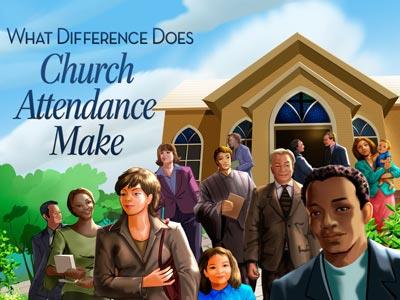-
Membership Matters Series
Contributed by David Owens on Mar 12, 2019 (message contributor)
Summary: Along with the privileges of membership in the body of Christ are many responsibilities. In order to have a growing and strong church, we must have every member doing their part.
A. The American Express Credit Card Company had an ad campaign slogan for 10 years, from 1987 to 1996 called “Membership has its privileges.”
1. That was certainly true for American Express credit card holders.
2. What I want us to realize is that membership in the family of God, the Church, has its privileges as well.
3. The privileges of church membership are far greater than the privileges of any credit card!
4. The blessings of God for us through Jesus are too numerous and wonderful to list.
5. Peter expressed some of those blessings and privileges in the beginning of his first letter, when he wrote: Blessed be the God and Father of our Lord Jesus Christ! According to his great mercy, he has caused us to be born again to a living hope through the resurrection of Jesus Christ from the dead, to an inheritance that is imperishable, undefiled, and unfading, kept in heaven for you, who by God's power are being guarded through faith for a salvation ready to be revealed in the last time. (1 Peter 1:3-5)
6. But what we also must realize is that along with the privileges of membership, there are also many important responsibilities – that’s what I want to talk about today.
B. The word translated “Church” in our Bibles comes from the Greek word “Ekklesia” which literally means “to call out from” and describes an assembly of people.
1. The Greek work “Ekklesia appears in the NT 114 times (74 times it is translated “church;” 35 times “churches;” 3 times “assembly;” and 2 times “congregation.”
2. When the word “church” appears it is used in two primary ways in the New Testament.
a. Sometimes it is used for the universal church – meaning all those who are saved around the world and for all time (Matthew 16:18; Colossians 1:18).
b. Other times it is used for the local church – meaning all those who are saved that meet in a certain place (Romans 16:5; Acts 8:1; 1 Thess. 1:1).
3. Today, as I discuss “church membership,” I will be using the term in the later sense – the local church sense.
4. So I am talking about congregational membership - being a member of a local church.
C. Many people wonder about church membership or congregational membership.
1. They wonder: “Is it necessary? Or “Is it biblical?”
2. These are important questions that deserve a biblical answer.
3. When we study our Bibles, we notice a number of things about church membership.
D. First of all, we notice that it is the Lord who adds a person to the church when they profess their faith, repent, and are baptized into Christ (Acts 2:38, 41, 47).
1. Typically, a person becomes a Christian in the context of a Christian community, and it is assumed that they automatically become a member or a part of that congregation.
2. But which congregation is a person a member of, if they become a Christian outside the context of a local church, or if they move from one community to the next?
3. In Acts 8, when Philip helped the desert traveling, Ethiopian eunuch, become a Christian, to which congregation did he belong when he returned to Ethiopia?
a. We don’t know, because Scripture doesn’t tell us.
b. If there was no congregation where he lived, did he begin one?
c. And if there was a congregation where he lived, how did he make known his desire to become a part of them?
4. These are good questions, but the Bible doesn’t specifically answer those questions for us.
5. So, the first thing we notice is that the Lord adds a person to the church upon their conversion.
E. Second, we notice that even though the rules and guidelines for church membership are never explicitly addressed in the New Testament, the concept of church membership is implied by a number of the principles that have to do with the church.
1. Consider the biblical images that are used to describe the church.
2. In 1 Corinthians 12:12-37, the church is referred to as a body.
3. In Ephesians 2:19-22, the church is referred to as a country with citizenship, a family/household, and as a building.
4. But perhaps the most helpful of the biblical images is the image of a flock under the care of shepherds (Acts 20:28; 1 Pet. 5:2).
5. All of these images for the church: a body, a country, a family, a building, and a flock, suggest a group of individual, distinctive parts that come together to form something whole.
a. All the images suggest the notion of belonging, commitment, and responsibility to the other members or parts of the body, country, family, building and flock.
F. Another thing we notice when we study our Bibles is all the “one another commands” of the New Testament.

 Sermon Central
Sermon Central



